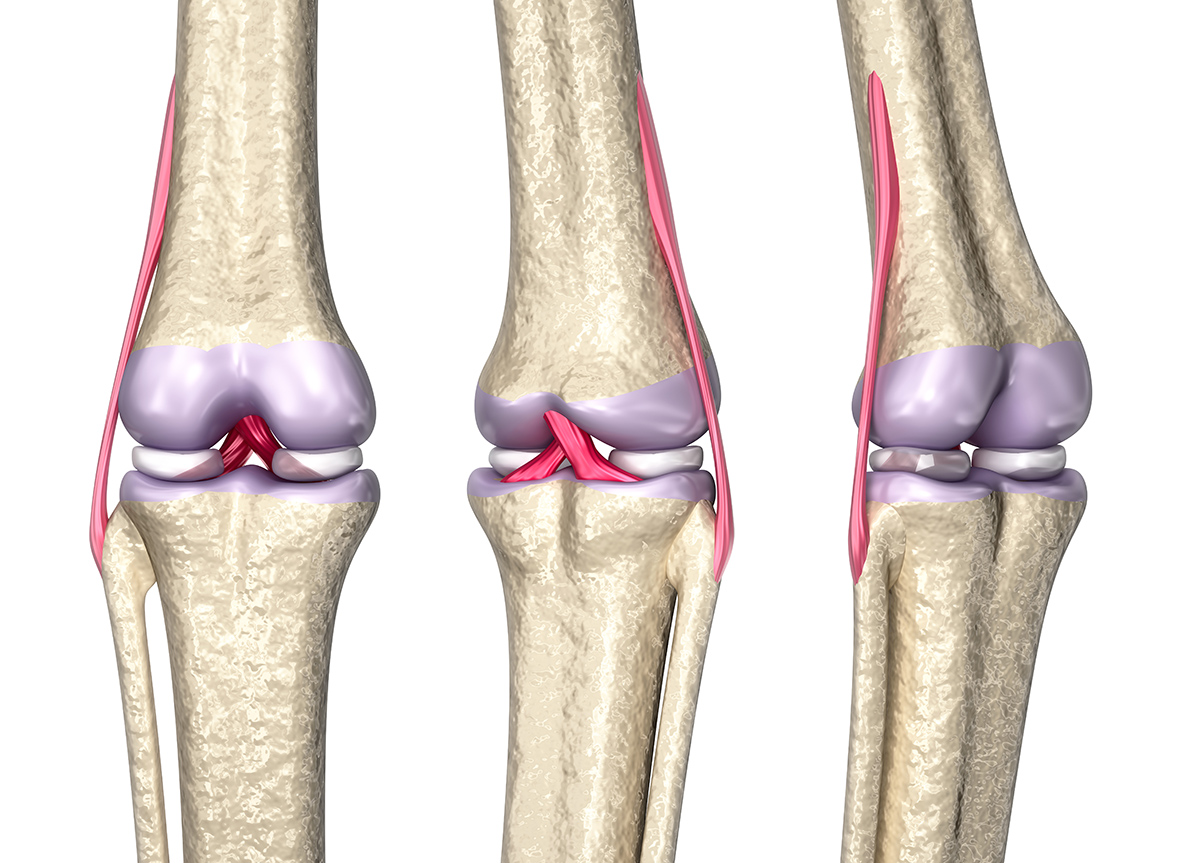The Importance of Isometrics for the Joint Replacement Client, Part 2
In Part 1 of this article, we defined isometrics and discussed the two basic types of isometric exercises, yielding and overcoming, and why you might choose one over the other. In Part 2, we’re going to discuss the benefits of isometrics, especially for joint replacement clients, and ideas on how to use and program isometrics.
What are the benefits of isometric exercises?
Isometric exercises are beneficial for everyone – athletes, fitness enthusiasts, those with musculoskeletal pain, those in rehab, etc. But they are especially beneficial for joint replacement fitness. Here are the primary benefits of isometrics training:
You control the effort level – The client has complete control over the amount of effort/force they are producing. This not only contributes to the safety of isometric training, but it also helps joint replacement clients (or anyone recovering from injury or motor control issues) learn how to control their force production. Isometrics specifically activate pre-motor and supplementary motor areas in the brain.
Isometrics are the least neurologically threatening form of strength training[1] – Because the client is in total control of the effort level and that force is being produced without joint movement, isometrics are a very low threat to the nervous system. This very often allows clients to utilize isometrics well before dynamic exercises, and feel safe producing force, which is very important as joint replacement clients relearn neuromuscular activation patterns.
Larger amounts of force can be generated than dynamic training – If you are doing multiple reps of an exercise, you are, by definition, not producing maximum force. Isometrics allow a client to work up to max force production in a safe and pain-free manner.
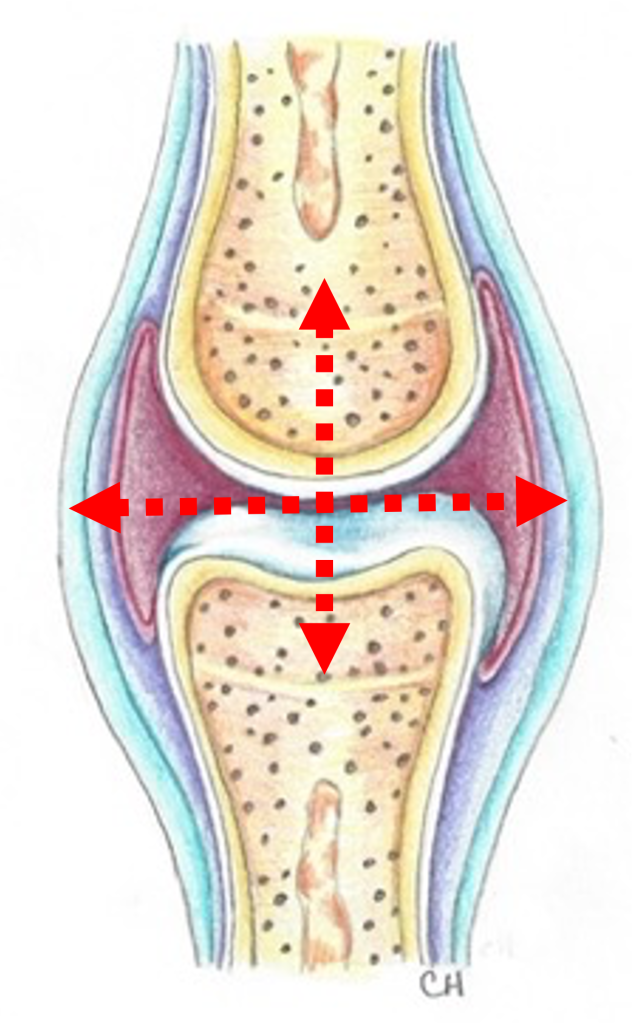
Isometrics promote joint health and strength – The synovial fluid in joints is a Non-Newtonian Fluid, meaning that when increased pressure occurs through the joint, the viscosity of the synovial fluid increases, to provide more protection for the joint. Thus, isometrics take advantage of the hydrodynamics of the joint fluid, which increases joint stability as increasing amounts of force are put through the joint.
Pain reduction – Isometric exercises have been shown to reduce pain in patellar tendinopathy[1] and lateral elbow tendinopathy[2], sometimes used by itself or with other modalities. In our experience, isometrics can be a very powerful tool to mitigate musculoskeletal pain.
How do you use isometrics?
There are three primary parameters we can adjust when doing isometrics:
- Effort level – This is the percentage of effort/force output at which you are engaging the target musculature. You could get objective numbers by using a dynamometer, but these can be expensive and most medical fitness trainers will not likely have access to one. We have found at a practical level that a subjective estimate by the client works just fine (e.g., “push at 50% effort… now increase to 75%… now ease into 100% effort if there is no pain.”
- Time of contraction – A full, 100% effort level of contraction can be held at most for six to eight seconds. But this does not mean that longer, sub-maximal effort isometrics are not useful. In fact, most of the studies that have used isometrics for pain reduction do just that – isometric holds at 30-60 seconds at 50-75% effort.
- Joint angles – An old myth about isometrics was that strength increases were only gained at the exact joint angle at which the isometrics we done. We now know this is not the case, and that strength increases can be found at multiple joint angle positions from isometrics, although how large of an increase can depend upon which joint angle was used.[1]
A good place to start with joint replacement clients would be lower effort levels, longer times of contraction, and the most comfortable joint angle. For a knee replacement client this could look something like:
- Exercises: Standing Knee Flexion and Standing Knee Extension
- Effort: 25-75% (highest possible without pain)
- Time: 30-45 seconds
- Joint Angle: 90o / mid-range
- Volume: 2-3 sets of the 30-45 second holds
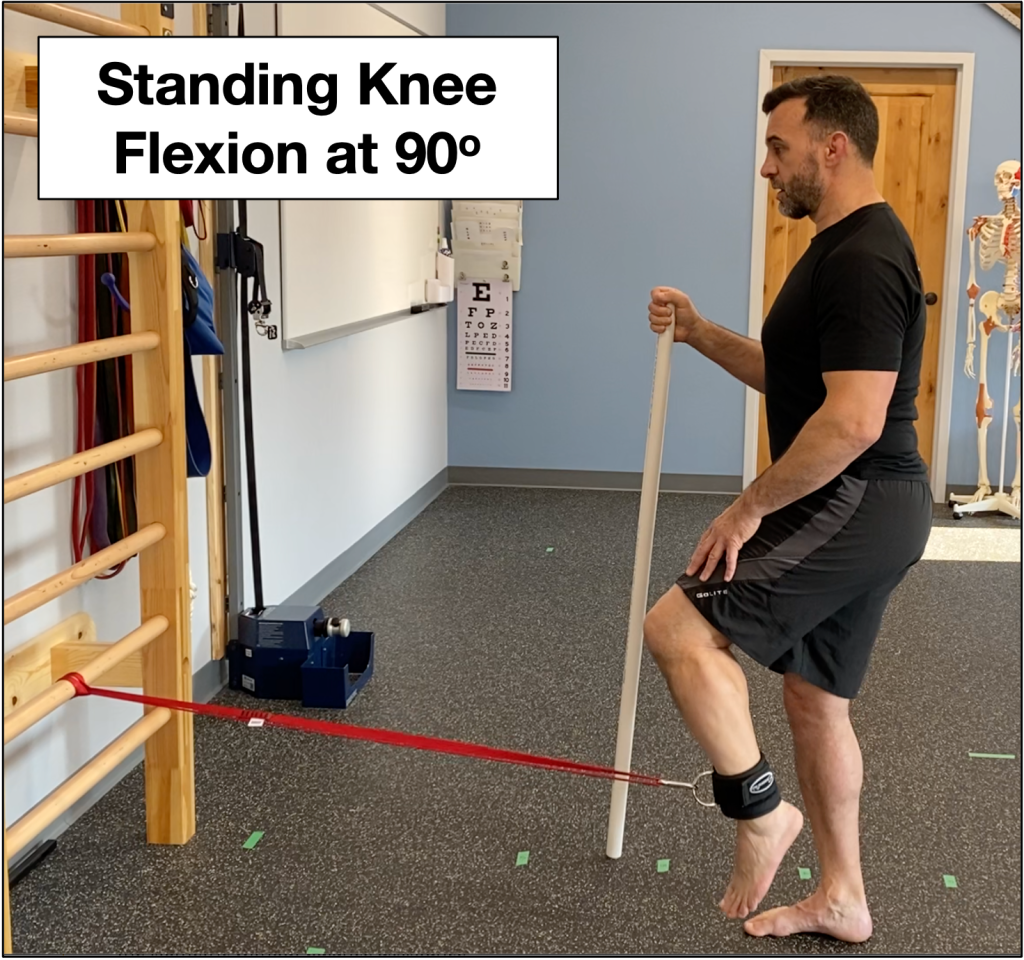
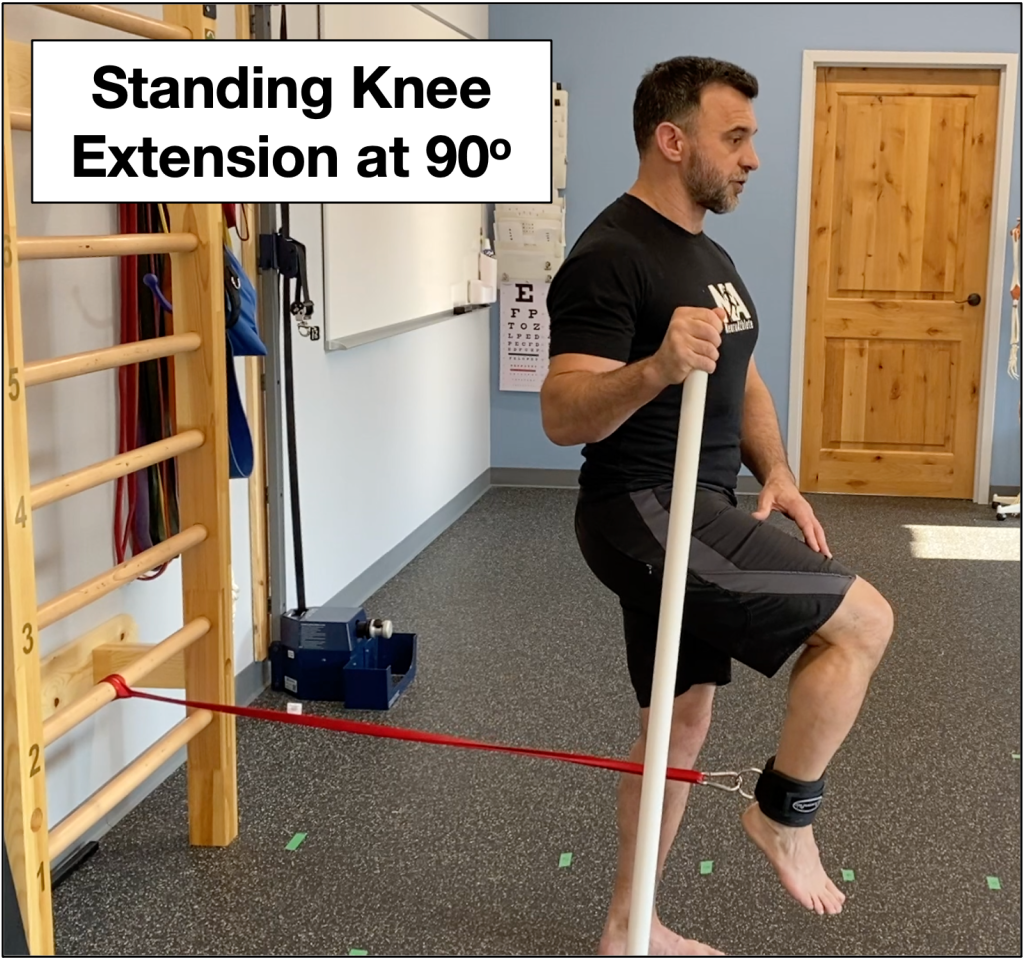
Unilateral, open chain exercises like these are great as they force stabilization to happen on the non-working side, so you would want the client to do isometrics on both sides. When the non-replaced side is doing the isometric, the replacement side must do the stabilization. This is just as important as the strength work. However, depending on the client’s starting point for stabilization, you may need to start with closed chain exercises.
As the joint replacement client becomes stronger and more stable, you could shift into higher effort levels, shorter times of contraction, and multiple joint angles. For a hip replacement client this could look something like:
- Exercises: Lunge / Split Squat Stance
- Effort: 75-100% (highest possible without pain)
- Time: 6-8 seconds
- Joint Angles: 1) Near fully stretched, 2) 90o / mid-range, and 3) near fully contracted
- Volume: 1-3 sets of 6-8 second holds at all three positions (e.g., 1 set = a 6-8 second hold at positions 1, 2, and 3)
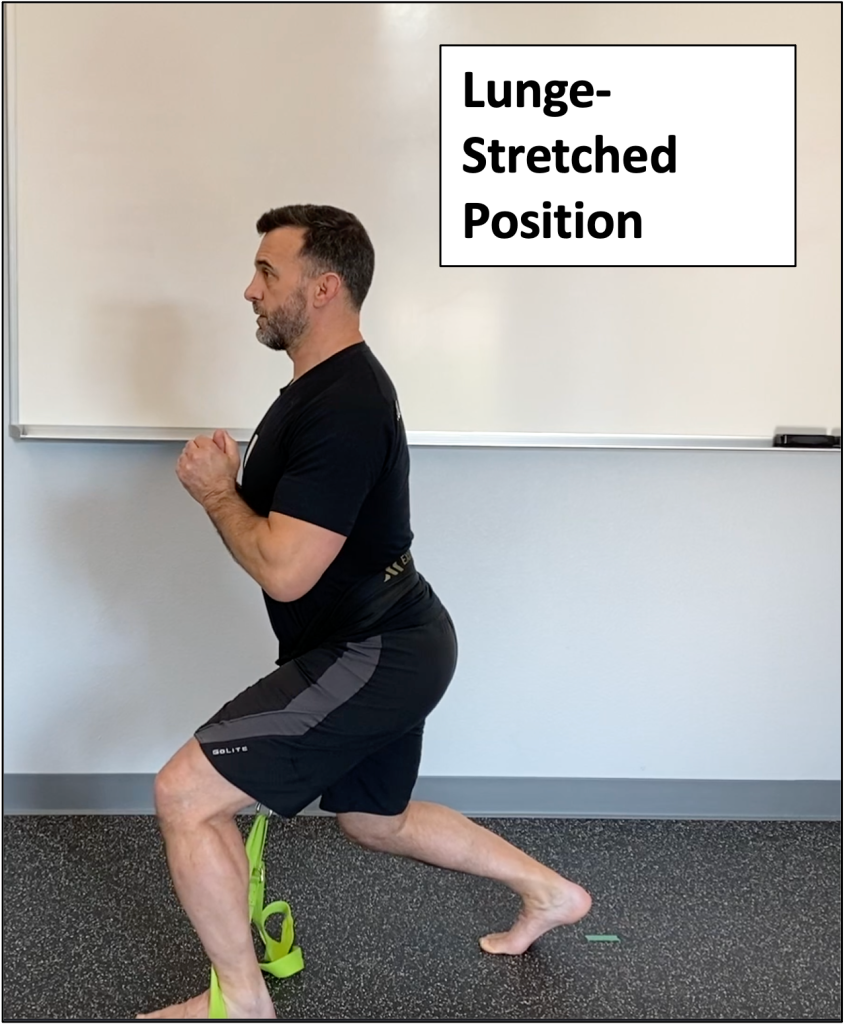
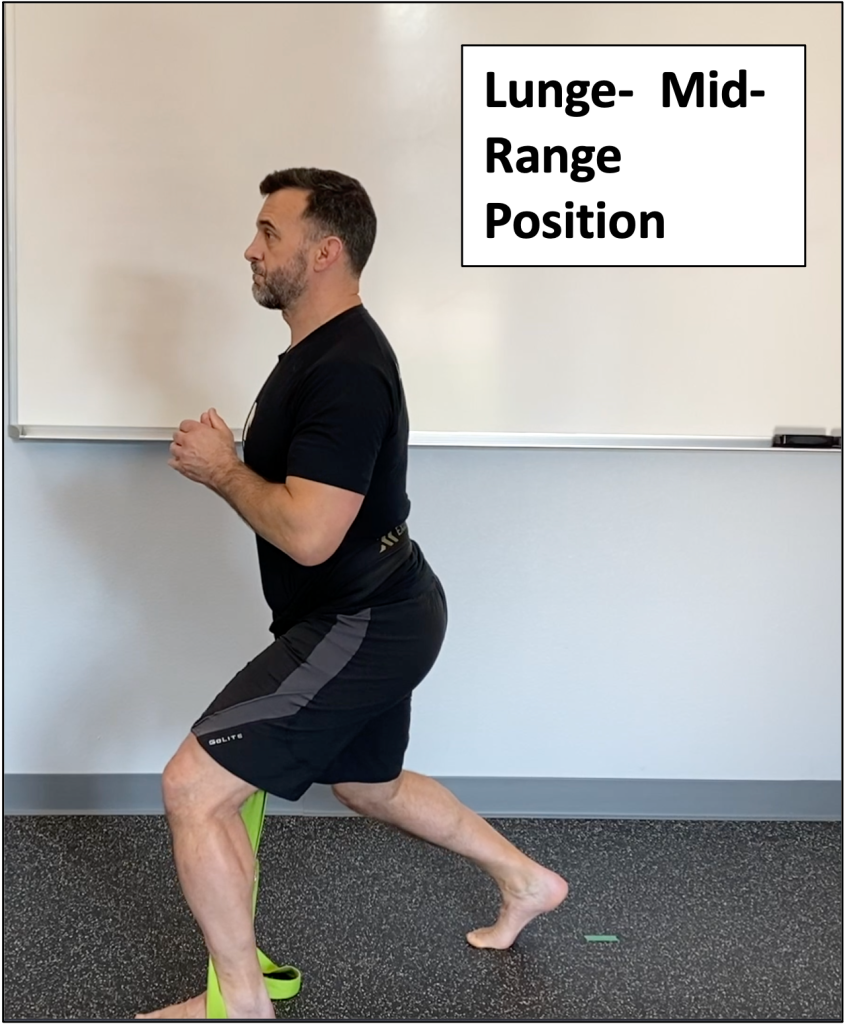
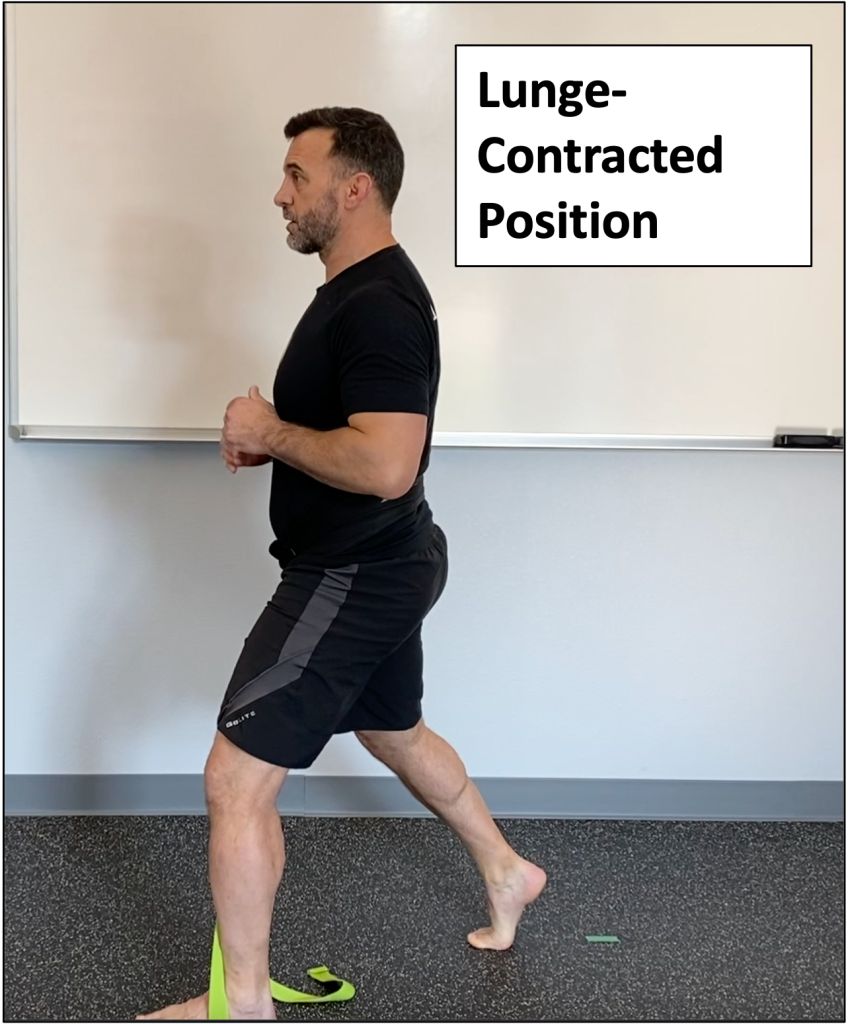
Isometrics can be a very useful and powerful tool when training joint replacement clients but also for general fitness, performance, and pain clients! You can learn more about isometrics, specific isometric exercises for joint replacement clients, and about taking a neuro-centric approach to medical fitness with our Joint Replacement Fitness Specialist online course, available through the MedFit Classroom!

Pat Marques is a Z-Health Master Trainer and NSCA-CPT specializing in training the nervous system to improve performance and get out of pain. After retiring from the Active Duty Army, Pat pursued his education and certifications in exercise science, initially working with wounded, ill, and injured soldiers. During this time that Pat discovered the power of using a neurological approach to training to get out of pain and improve fitness and performance. He currently provides exercise therapy, movement reeducation, and strength and conditioning for all levels of clients at NeuroAthlete, from chronic pain sufferers to Olympic-level and professional athletes.
References
[1] Cobb, E. (2017). 9S: Strength & Suppleness Course, Z-Health Performance Solutions. [2] van Ark M, et al. (2015). Do isometric and isotonic exercise programs reduce pain in athletes with patellar tendinopathy in-season? A randomised clinical trial. J Sci Med Sport (2015). [3] Vuvan, V., Vicenzino, B., Mellor, R., Heales, L., & Coombes, B. (2019). Unsupervised Isometric Exercise versus Wait-and-See for Lateral Elbow Tendinopathy. Medicine & Science in Sports & Exercise. [4] Kubo, K., Ohgo, K., Takeishi, R., Yoshinaga, K., Tsunoda, N., Kanehisa, H., & Fukunaga, T. (2005). Effects of Isometric training at different knee angles on the muscle-tendon complex in vivo. Scandinavian Journal of Medicine & Science in Sports.
